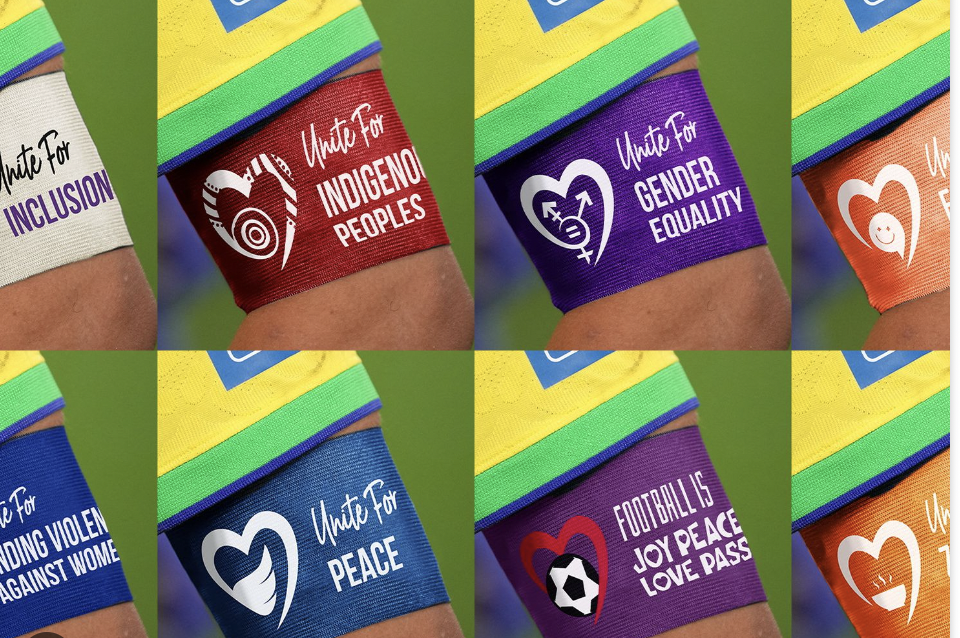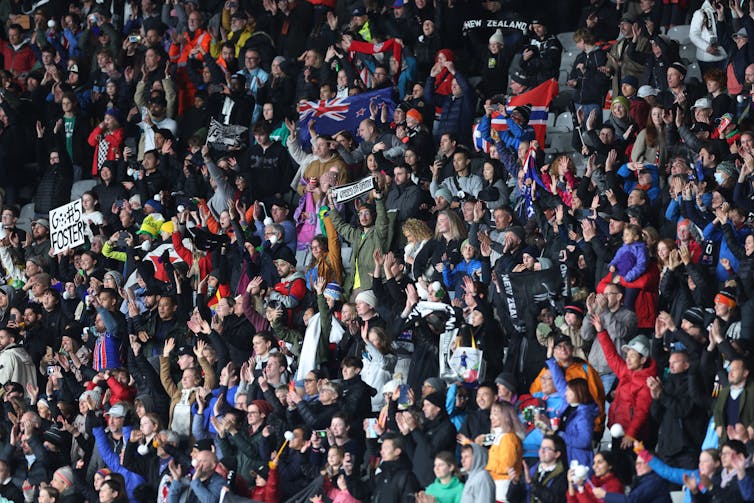
POSTED INTHE CHRIS HEDGES REPORT
BY CHRIS HEDGES
Professor Staughton Lynd. an outspoken critic of U.S. policy in Vietnam, was reported to be in Hanoi 12/28 to gather information regarding North Vietnam's peace conditions. LYnd, shown here in a 1965 file photo after he was splashed with red paint on a peace March in Washington, teaches history at Yale university and is one of the leaders of the Anti-war movement.
The radicalism of the 1960s did not fall from the sky—it was built by the uncommon bravery of common people. One of those people was Staughton Lynd, a professor who accompanied movements for justice as a scholar, lawyer, and activist throughout his life. A conscientious objector to the Korean War, Staughton went on to join the Civil Rights Movement and oppose the Vietnam War through his scholarship and his actions.
Alice Lynd was a draft counselor and trainer of draft counselors during the Vietnam War. In 1968, she published We Won’t Go: Personal Accounts of War Objectors. She later became first a paralegal and then a lawyer. After retirement from practicing labor law in the wake of plant shutdowns, she became an advocate for prisoners sentenced to death and/or held for years in solitary confinement at Ohio’s supermaximum security prison.
Studio Production: David Hebden, Adam Coley, Cameron Granadino
Post-Production: David Hebden
TRANSCRIPT
Chris Hedges: As a war correspondent, I found that those who were best able to resist the evil around them were often couples. They found in their relationship a grounding and affirmation that, because they were often reviled for denouncing the injustices and violence around them, they could not find in the wider society. Few couples can match the decades-long acts of resistance against racial injustice, permanent war, the disenfranchisement of the working class, the cruelties of the carceral state and Israeli apartheid than Staughton Lynd, who died last November, and his wife, Alice. They embodied both the essence and the cost of the moral life.
Today, we will speak with Alice about the struggle she and Staughton embraced, the hard road the activist Dorothy Day called The Long Loneliness. Staughton, while a student at Harvard, immersed himself in left-wing politics. There, during Harvard Summer School, he met Alice, whom he married shortly before his graduation from Harvard. He was a conscientious objector during the Korean War, served in the army as a medic – He was forced out of the army because of his radical politics. He and Alice moved to an ecumenical community in Georgia where they spent three years. They later moved to New York, where Staughton received his doctorate from Columbia University. While in New York, Staughton worked with a tenant’s rights group.
By 1967, Staughton had written or edited four books, including Class Conflict, Slavery, and the United States Constitution, a collection of essays on democratic struggles during the American Revolution that argued that slavery was central to the Constitution.
Join thousands of others who rely on our journalism to navigate complex issues, uncover hidden truths, and challenge the status quo with our free newsletter, delivered straight to your inbox twice a week:
His radical scholarship, like his activism, made university administrators extremely uncomfortable. Staughton took a job teaching at Spelman College in Atlanta, offered to him by Howard Zinn. The two professors joined students in the early protests of the Civil Rights Movement. Staughton, who resigned when the university fired Zinn because of his political activity, oversaw the Freedom Schools set up during Mississippi Freedom Summer.
The couple eventually moved to New Haven when Staughton was hired to teach at Yale. But after he and Herbert Aptheker and Tom Hayden made a fact finding trip to Hanoi during the Vietnam War, he was denied tenure and successfully blacklisted at universities across the country. Unable to get a teaching job, he and later Alice went to law school. As attorneys in Youngstown, Ohio, they represented steelworkers being laid off as steel plants were shut down.
After they retired, they represented prisoners held for years in solitary confinement in a class action that went to the Supreme Court of the United States affirming the rights of prisoners to due process when placed or retained in solitary confinement for years. The Lynds also did extensive research and writing on behalf of men who were sentenced to death or life in prison in the aftermath of the 1993 uprising at Southern Ohio [Correctional] Facility. I highly recommend Stepping Stones: Memoir of a Life Together written by Alice and Staughton, as well as Staughton’s book, Intellectual Origins of American Radicalism.
Joining me to discuss a life of resistance and the lessons learned in the long fight against militarism, and for racial, political and economic justice is Alice Lynd, along with Luke Stewart, who edited My Country is the World: Staughton Lynd’s Writings, Speeches, and Statements against the Vietnam War.
Luke, you did a lot of research into, especially the government’s persecution of Staughton and uncovered all sorts of documents, which I’d like you to talk about, but just give us an overview of who Staughton Lynd was, how he moved from the Civil Rights Movement to the anti-war movement, and how and why he was demonized and blacklisted by the FBI, the CIA, and government agencies.
Luke Stewart: Well, thank you very much for having me. It’s wonderful to be here. Well, I think you did an excellent job of introducing who Staughton and Alice Lynd were and are. As you mentioned, Staughton Lynd was drafted into the army, and he has a dubious honor, as it were, of actually being blacklisted twice during the Cold War. The first time, as you mentioned, he was kicked out of the army for being disloyal and potentially subversive.
Now, in 1958, the Supreme Court overturned that discharge from the army, which allowed him to pursue a doctorate in history. By 1961, he had met Howard Zinn, the chairman of the History Department at Spelman College, as you mentioned. And so from 1961 till 1964, Staughton was teaching US history at Spelman College, the predominantly African-American women’s college, in Atlanta, Georgia.
Now in 1964, as you mentioned, Staughton Lynd resigned from Spelman College in protest of the firing of Howard Zinn. And during that summer, while Alice and the children moved to New Haven, Staughton went to Mississippi to be the director of the Mississippi Freedom Schools, the project of the Freedom Summer, organized by the Student Nonviolent Coordinating Committee. During that summer, Staughton was basically, as he described himself, an itinerant bureaucrat, essentially traveling around the states and organizing the Freedom Schools.
It was actually in August 1964 during an impromptu ceremony after the bodies of three civil rights workers were found: James Chaney, Michael Schwerner, and Andrew Goodman, that Staughton Lynd was introduced to the Gulf of Tonkin incident by Bob Moses, the leader of the Mississippi Freedom Summer.
When Staughton went to New Haven in September 1964, he was still very much immersed in the politics of the Civil Rights Movement. He spoke at Yale several times about his experiences in the South and in civil rights movements. But it was actually a trip to Selma, Alabama, in February 1965 where Staughton actually learned of the National Liberation Front of South Vietnam’s attacks on an army barracks in Pleiku in South Vietnam. And this is the pretext that the Johnson administration used to launch an all-out bombing campaign of North Vietnam, the sending of the first ground troops, the Marines, to South Vietnam.
So in that milieu of being in the Civil Rights Movement and active against racism in the South, Staughton immediately emerged at Yale University as a prominent activist against the war. In fact, the FBI’s first report on Staughton’s activities in February 1965 was an investigation to see if he had committed sedition for signing the Declaration of Conscience, which was a document organized by pacifist groups to denounce the war and any participation in it.
Now, as you mentioned, Staughton was ultimately denied tenure at Yale and blacklisted. And to understand Staughton’s blacklisting from the university, I think there are three major things that we need to understand. This was, of course, in the heat of the Cold War, where pervasive anti-communist consensus still gripped the nation, the media, Hollywood, conservatives, liberals, Democrats, Republicans alike. And so, when Staughton Lynd made arguments against the war, he was making very specific arguments. For example, he argued that the war represented a constitutional crisis because the war was undeclared. He also argued that the war was illegal under international law because the Security Council had not intervened in the conflict.
Now, in this context of also the Cuban Missile Crisis just happening in 1962, there was a real sense of urgency. This was, according to Staughton, an international emergency. And so this really differed from his liberal colleagues at Yale and his conservative colleagues. He argued that the war, in this sense, was not an aberration or a mistake, but actually central to US foreign policy.
Secondly, because of this, Staughton argued that, ultimately, it was civil disobedience and what he called “nonviolent revolution” which would ultimately bring about the opposition to the war which was needed to end the war. It was this advocacy for civil disobedience, specifically advocating for those facing the draft to resist the draft. Those already in the military, if they so chose to follow their conscience, to not go to Vietnam as the [inaudible] did in 1966.
Finally, it was really Staughton’s trip to Hanoi, as you mentioned, that really irked the national security state and the liberal establishment of which Yale was a valued member. And here, I really detail this in the book, but this is where the convergence of the national security state, the FBI and the CIA, again, come together with the liberal establishment and the shunning of Staughton Lynd, basically the chasing of Lynd out of the university.
And just very briefly, this was done in two particular ways. So, the president of Yale, his name is Kingman Brewster, two documents landed on his desk by employees of the US government. The first was after his trip to Hanoi, this fact-finding mission, about the good negotiation position, the CIA’s readout of Staughton’s speech, which was broadcast over Radio Hanoi and transcribed by the CIA, landed on the desk of Kingman Brewster. This was not public information.
So ultimately, somebody in the Agency sent this readout to Kingman Brewster as a way to denounce Lynd’s activities of going to Hanoi. Brewster used this information to denounce Lynd in a public address in which he said Lynd was giving aid and comfort to the enemy.
Secondly, in April 1966, Lynd gives several speeches in Canada. At one particular speech in Ottawa at Carleton University, Lynd is denouncing the Munich analogy, which the Johnson administration uses in order to sell the war to the American people, saying essentially, Ho Chi Minh is the new Hitler, and therefore, we need to intervene to stop communist aggression in South Vietnam. So this sensational newspaper account lands on the desk of Kingman Brewster, sent by the US Ambassador to Canada. And again, the US Ambassador sending this sensational newspaper account which misquoted Lynd and basically said, in essence, Lynd was basically arguing LBJ is the new Hitler. This article was used, again, to denounce Lynd within the Yale community.
It was during a meeting in April 1966 that the chair of the history department at Yale, John Morton Blum, told Staughton that his activities were strident and extreme. And Kingman Brewster ultimately believed by this point that Lynd’s colleagues had lost respect for him. This is the essence of the Cold War blacklist, sending these kinds of articles in order to denounce somebody either to the president or department chairs in order to, basically, drum up support for pushing somebody out of the university. So this is just one of the ways which is documented in the book.
Chris Hedges: And we should be clear that Staughton was a national figure at that point.
Luke Stewart: That’s right.
Chris Hedges: Alice – And you worked a lot with conscientious objectors, I know, during the war, I wrote a book about it – There was heavy pressure from the government in both the anti-war movement and the Civil Rights Movement to exclude communists. You and Staughton both vigorously opposed that. I wondered if you could explain why, and also why you didn’t support engaging in coalition building with the Democratic Party?
Alice Lynd: Well, when we moved to Atlanta in 1961, there weren’t very many interracial groups, but the Women’s International League for Peace and Freedom was one. I used to go to their meetings. And the issue came up of communists like Anne Braden, and our attitude was that we should protect rather than exclude communists. If they wanted to help create a better world, okay. There wasn’t any argument as to tactics or something like that where there would be divisions. It was a sense that people should be able to be communists if that’s how they wish to express their social concerns.
When Herbert Aptheker, who was an avowed communist, invited Staughton to Vietnam, the North Vietnamese had said that they wanted Herbert to come. Herbert, who was a communist, [was] to bring two non-communists with him. So he approached Staughton. Well, it didn’t trouble Staughton that Herbert was a communist. Staughton had some difficulty finding the third person, but he did find Tom Hayden from the Students for a Democratic Society, who did go. The three of them did go. But communism was not the issue, the issue was the nature of the war that was happening.
Now, you asked also about coalition politics. I took a little bit of time to look in the book, Stepping Stones, that you referred to, where Staughton includes something from minutes that were taken at a meeting of what’s known as SNCC, that is Student Nonviolent Coordinating Committee. And I’d like to read you just a few things that appeared there.
Ruby Doris Smith asked, “Whether we’re working to make basic changes within the existing political and economic structure.” Ivanhoe Donaldson: “Disagrees with just making more Democrats and more Republicans. What is the point of working within Democratic Party? It’s not a radical tool.” Lawrence Guyot: “If our goal is just voter registration, then we should stop. We have to organize around something.”
Well, Staughton kept trying to say, SNCC should have an economic program, but that was not something that SNCC wanted to hear at that time. I think Staughton was anticipating that the mechanical cotton picker was going to wipe out these agricultural jobs that Blacks had been doing for decades, and that there needed to be something to take its place such that people weren’t displaced. But that didn’t happen.
Chris Hedges: So I want to ask both Alice and Luke, maybe we’ll start with you, Luke. Staughton and Alice, you clashed with the radical left over the embrace of violence. And as both the Civil Rights and the anti-war movement progressed, this commitment to non-violence saw you marginalized from these movements, movements you helped build. And it also saw deification by the radical left of the Vietnamese revolutionaries, who, of course, were using violence.
Staughton, because of this point, refused to participate in Bertram Russell’s sponsored International War Crimes Tribunal because it wouldn’t examine war crimes committed by both sides. I want you to speak about this double marginalization first by the establishment and then by the radical left. And I’ll begin with you, Luke.
Luke Stewart: Well, this is a very complex question. But ultimately, when Staughton realized that he wouldn’t be able to continue at Yale, Staughton and Alice decided to move to Chicago with the understanding that Staughton would be working with Rennie Davis of the Students for Democratic Society doing community organizing in Chicago. And when Staughton and Alice arrived in the summer of 1967, the movement was rapidly changing.
By that point, the community organizing program which was being organized was quickly abandoned, partly because Rennie Davis went to North Vietnam and was introduced to the war in a way which he wasn’t necessarily orientated towards. And of course, by October 1967, you have the killing and capture of Che Guevara, you have the massive march on the Pentagon. And then by 1968 you have the Tet Offensive, the various assassinations: Martin Luther King Jr., Bobby Kennedy.
So the movement was basically entering a phase in which it believed that the way it was opposing the war in Vietnam, the way it was opposing racism at home was not working. And so some of the members of what was called the movement entered into more of a confrontational politics, which included street fighting, smashing windows.
Staughton did not want to be a part of this. He was a very courageous, but also principled individual who argued that it was participatory democracy, consensus decision-making, which led to the growth of the new left, the student movement. And by abandoning those principles for vanguard factions, the breaking up of STS into the Weathermen, into more clandestine activity, which would essentially marginalize the movement into these factions. And yes, indeed, opposed even participating in the major demonstrations at the Chicago Democratic Convention.
He did so because he was a very principled individual who believed in non-violence and participatory democracy. As you said, this did lead to him being marginalized from the movement. Part of this marginalization came from the fact that his main ally in the pacifist movement, Dave Dellinger, essentially found a way, opened the door to working with these new militants by 1968.
So, Staughton really took a principled stance at the same time, as you said, he was being marginalized by the establishment. So this is where Staughton would tell me when I would interview him that these were lonely moments in his life. These were difficult moments in his life. This was not easy, but that he was not going to succumb to the latest fad or fashion within the movement or certain rhetorical choices that were being made.
And just very briefly about the Bertrand Russell War Crimes Tribunal, indeed, Staughton took a stance against the Trotskyist elements organizing the Bertrand Russell War Crimes Tribunal, that anything the Vietnamese did in their liberation struggle was justified. And Staughton made the point that he was not simply saying that both sides needed to be held accountable, but if you just simply looked at what was going on in Vietnam, it would be clear to anyone who looked at the evidence that the Vietnamese were not guilty to the same extent as the United States government and its allies in the war crimes which were being committed in Vietnam.
Unfortunately, the War Crimes Tribunal refused to do so, and many, many people, not just Staughton, believed that that had lessened its impact, especially in the United States.
Chris Hedges: And Alice, can you address that? I just want you to talk about the effect that it had on you and Staughton, and whether it was that marginalization that then led you to law school in Youngstown.
Alice Lynd: Well, there are some intervening steps there, but let me say that I think that Luke has said most of what needs to be said about the War Crimes Tribunal. I remember Ralph Schoenman, who was the organizer for the International War Crimes Tribunal, coming to our house, and Staughton raising these issues, and Ralph saying, anything is justified that drives the invader into the sea. I think Dave Dellinger was really dismayed when Staughton said he wouldn’t go with him to the War Crimes Tribunal.
But I think Luke has adequately explained why that parting of the ways with Dave was very painful, I think, for both of them. And years later, there was more of a coming together. Staughton knew that he was going to be marginalized when he refused to go along with men sitting in our living room talking about icing and offing other people.
I mean, that, no. But neither did he feel comfortable with conscientious objectors who were pacifists and were expressing their own religious convictions, but did not seek to bring non-pacifists into the anti-war movement. He had the greatest respect for David Mitchell who, very early on, opposed the Vietnam War on grounds that the US was committing war crimes in violation of the Nuremberg principles that had been promulgated after World War II.
And this spoke to young people in a way that pacifism didn’t. It meant that people who opposed conscription, who opposed this particular war. Many people for many different reasons were willing to say no to military service, and it escalated from there. But I think Staughton attributed a great deal to David Mitchell.
Chris Hedges: Luke Staughton argued that, and I’m quoting, “The treason of the intellectuals in the past is not that we failed to believe, but failed to act.” I don’t know whether he gets this from Julien Benda, but can you address that idea?
Luke Stewart: Well, back in February 1965, in the first real talk he gave against the escalation of the war by the Johnson administration, he made this point that the treason of the intellectuals, in Staughton’s opinion, would be the failure to act in the face of what he believed was a constitutional crisis, an illegal war under international law, and in the context of the nuclear age in which an escalation in Vietnam could potentially lead to a nuclear conflict.
So for Staughton, who was a very serious historian, as you mentioned in your introduction, by the time he was blacklisted, he had published five scholarly books. He argued throughout the war that in times of international crises, certainly a socialist intellectual needed to put down the books and become part of the movement in order to stop the war. So Staughton really believed that the treason of the intellectuals post World War II was to not respond in the face of such an egregious crime, a crime against humanity, a crime against peace where war crimes are being committed.
So Staughton really developed the idea of becoming a resistance intellectual, building a community of struggle in which it would be clear that those who would engage in anti-war resistance would be marginalized by the university or in other professions, and there would need to be building of community power at the local grassroots level to support those who would be in and out of work.
So Staughton really did believe that the most important task after 1965 for him was not the writing of his history books, but stopping the war in Vietnam. And he really paid a heavy price for doing so despite the fact he did write some of the best “new left scholarship”, particularly on the American Revolution.
So Staughton really is a model for us, I think, today to look at, especially people who graduate from university and do not have any hope of getting a job in the university, what it means to build an alternative lifestyle.
Chris Hedges: So Alice, I don’t have a lot longer, so I just want to get to this point. Both you and Staughton were present at the inception of the anti-war and the Civil Rights Movement. You also watched it fragment and implode. I wondered if you could just briefly explain why you thought it imploded and fragmented and self-immolated, and then that focus of localism. You both get law degrees and you go to Youngstown, Ohio. If you could talk about those two points.
Alice Lynd: Now, let’s see, the first one is…
Chris Hedges: The implosion of the Civil Rights and anti-war movement.
Alice Lynd: Well, I think as Luke has indicated, I think people felt that nonviolent tactics weren’t ending the war. They felt, we got to do something more of… I think that a lot had to do also with the government’s attack on Black radicals, the assassinations, the sense of, we may not initiate attacks against oppression, but we’re not going to stand by and just let it happen. If it takes weapons to defend ourselves, we’re going to use weapons to defend ourselves. Self-defense is different from aggressive war. Self-defense in individual situations is different from participation in an armed force. But it was as if the armed forces of the state were going after defenseless individuals.
I don’t know that I was close enough to that, but we lived in an area in Chicago, which during the time we lived there, we were the next to last white family to move out so that we saw these changes going on. Where we lived in South Shore was regarded as one of the 10 high crime areas in Chicago at the time. And we experienced that. Our children experienced it. Have I answered your question sufficiently?
Chris Hedges: Yes. I mean, I think what you’re arguing is that those tactics of confrontation with the state – And Martin Luther King, we should mention, was a very lonely figure at the end.
Alice Lynd: Yes.
Chris Hedges: And my father was involved with the Berrigans, and they would all argue that nonviolence, and as you said, organizing and education, expanded the movement. Those tactics contracted the movement.
But then just briefly, because I only have a few minutes left, you and Staughton have law degrees. You go to Youngstown, and you spend your life fighting on behalf of unemployed or laid off steelworkers. And this as this idea of resistance as local, I wonder if you could address that?
Alice Lynd: Yes. Well, I would like to speak about Ed Mann, who was one of two local union officers in steel whom we got to know when we were still living in Chicago. And Ed used to say, you have to stay in one place for a long time. You have to build trust. You don’t know when the moment is going to arrive when something is going to be the moment where something can be done.
He would give us an example, a man who had worked in the steel mills for years, was approaching retirement, and was killed when a truck backed up. This was a week before his retirement. Ed got up on the bench. You’re not going to work when Tony got killed, are you? No, we’re not going to work. We’ve been trying for years to get safety devices put in, and we are not going to work until they’ve done this, and this, and this, and this, and this, and this. Seizing the moment when people can see and feel that something has to be done, this cannot go on.
Another thing that Ed felt was that people can contribute in different ways. Some people are going to go out… I mean, lead a work stoppage. Some people are going to be out on the picket line. Some people will make phone calls. Some people will make cookies for a bake sale. But you involve people at whatever level feels right to them within the context of their family and the other pressures that may be on them.
When we were in Nicaragua at one time, it was a man on the east coast of Nicaragua. This was during the Contras war. When he said that the question was how do you move people from passive to active? And I think Ed had this sense that the moment arises when everybody wants to turn out. At a certain point when some nurses were on strike at a hospital near Youngstown in a town called Warren, Ohio, the support that came out for that strike from auto workers at Lordstown and many other groups, it was a big march on a lovely October day in 1982, I think it was.
The chant was, “Warren is a union town. We won’t let you tear it down.” And there’s a famous picture of Ed being dragged across the street by the police, and so forth. But this sense that at certain points, people are going to come out and say, this is too much. It’s got to stop, and it’s this local involvement that then people find each other and build something together.
Now, we had something called the Workers’ Solidarity Club. It was people from various unions and a few lawyers like ourselves who would meet together once a month. Ed used to say, everybody knows if you got a problem and you need some help, on the second Tuesday, you go down to the electrical workers’ union hall, there’s going to be people there who you can talk to about what tactics you might be able to use, what your resources are, and so forth.
So we kept that going for a long time. Ed would say, there’s a strikeout at such and such. I’m going out tomorrow morning with some firewood. Anybody want to come with me? And somebody else would come with a bag of potatoes. This kind of solidarity at a community level of people responding to its needs, I think that’s how the working class has existed.
Your neighbor, somebody dies, you take the food. Your other neighbor, grandma needs help, so you go and take care of grandma while somebody else is doing something. This fabric of mutual aid is how people survived.
Chris Hedges: Well, and that echoes Kropotkin, and it also echoes Rosa Luxemburg.
Alice Lynd: Yes.
Chris Hedges: Both.
Alice Lynd: Rosa Luxemburg was one of Staughton’s heroes.
Chris Hedges: Well, she’s pretty high in the pantheon of great revolutionaries.
That was Alice Lynd and Luke Stewart, who edited My Country is the World: Staughton Lynd’s Writings, Speeches, and Statements against the Vietnam War. I want to thank The Real News Network and its production team: Cameron Granadino, Adam Coley, David Hebden, and Kayla Rivera. You can find me at chrishedges.substack.com



 Governor Gretchen Whitmer, rendered in Barbie form by her staff.
Governor Gretchen Whitmer, rendered in Barbie form by her staff.











